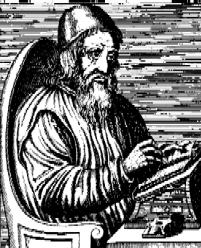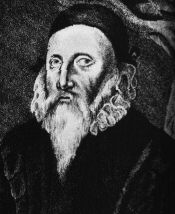Site map |
What's new |
Timeline |
Trithemius |
Agrippa |
Bruno |
Dee |
Grimoires |
Other |
Feedback |
Site map |
What's new |
Timeline |
Trithemius |
Agrippa |
Bruno |
Dee |
Grimoires |
Other |
Feedback |

Twilit Grotto:
Archives of Western Esoterica
In 1453, Constantinople fell to the Turks, ending the Byzantine empire. This date also marks the beginning of the Renaissance, since the waves of Greek refugees spread knowledge of Greek throughout Europe. Included with the newly available Greek manuscripts were the Corpus Hermetica, Plotinus, and the works of the Neoplatonists.Shortly thereafter in 1492, Isabella and Ferdinand expelled the Jews from Spain. This sent waves of Jewish refugees throughout Europe, spreading knowledge of Hebrew and of the Kabbalah.
Renaissance philosophers sought to integrate these traditions with the view of unifying the rapidly disintegrating religious factions and also ending the constant political strife. Thus they are the forerunners or prophets of the Rosicrucian and Illuminati movements.

Master cryptographer and magician, Trithemius was the mentor of Heinrich Cornelius Agrippa. Here he presents a concise history of the world, and how it has been shaped by angelic agents. (English translation)
This is Trithemius' most notorious work. On the surface it is a system of angel magic, but within is a highly sophisticated system of cryptography. It claims to contain a synthesis of the science of knowledge, the art of memory, magic, an accelerated language learning system, and a method of sending messages without symbols or messenger. In private circulation, the Steganographia brought such a reaction of fear that he decided it should never be published. He reportedly destroyed the more extreme portions (presumably instructions for prophecy/divination) but it continued to circulate in mss form and was eventually published posthumously in 1606. (Latin)

Another influential Renaissance figure, Dee was Queen Elizabeth's scientific advisor. In later life, he became disillusioned with pure science and started experimenting with occult techniques of the day. Many of his esoteric writing were kept secret and only discovered by accident long after his death.
|

Bruno was one of the most original and colorful thinkers of the Renaissance. The Inquisition considered him a dangerous heretic, and had him burned at the stake in 1600.
|
|